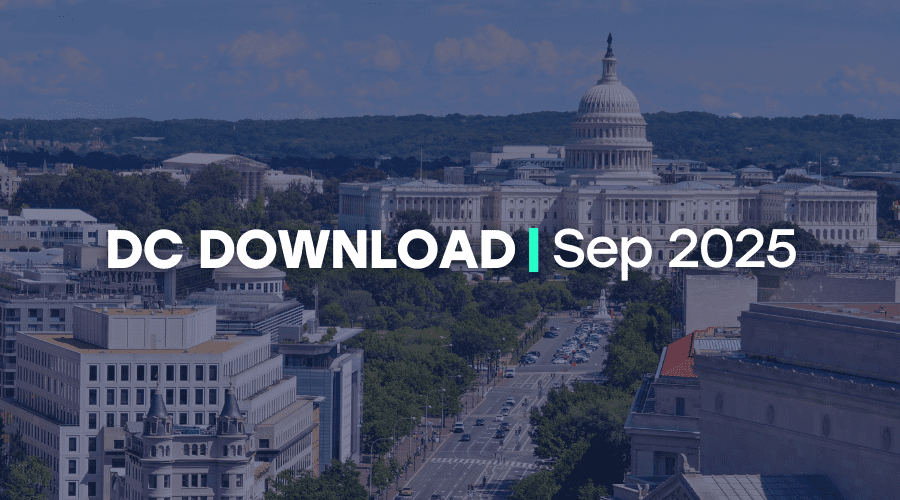IBM’s series of Impact Grants probably rings a bell to many in the nonprofit sector. In recent years, IBM has reserved over 200 of their 2,500 signature Impact Grants specifically for non-governmental organizations trying to harness data and analytics in innovative ways for social good. Now in the process of developing a white paper on the subject, IBM has opened a survey designed to gain insight into the nonprofit sector’s data and analytics practices. With this white paper, IBM aims to help nonprofits incorporate data and analytics practices into daily decision-making and operations.
To learn more about IBM’s work around data and analytics practices, we interviewed Independent Sector Board Member Diane Melley, vice president of global citizenship initiatives in IBM Corporate Citizenship & Corporate Affairs.

Diane Melley, IS Board Member & Vice President of Global Citizenship Initiatives for IBM Corporate Citizenship & Corporate Affairs.
IS: How long has IBM been interested in this topic as it pertains to nonprofit operations and decision-making?
DM: IBM has maintained the core value of giving back to the community and society throughout our 105-year history. Our approach to giving back leverages the strengths of our company to help tackle today’s toughest societal issues.
Our Impact Grants program is central to our citizenship strategy and commitment to serving our communities. We have provided over 2,500 consulting and software grants to nonprofit organizations over the past seven years, but have placed a greater emphasis on providing analytics solutions to help our partners over the past few years. You can learn more about our offering portfolio on our corporate CSR website.
IS: What are the goals or the white paper and what does IBM hope organizations in the charitable community will ultimately get out of it? When do you expect to publish the white paper?
DM: Our goal is to develop a thought leadership paper assessing the journey of data and analytics in the nonprofit sector, highlighting the challenges, common themes, and emerging trends. We believe that a market assessment of this kind has never been done before for the nonprofit sector, and that it is essential to document where the sector stands with respect to data and analytics maturity, and where nonprofits can go from here given the proliferation of new technologies and opportunities for collaboration.
We expect to publish our findings this summer. Independent Sector will send an email with an announcement and link to the white paper at that time.
IS: Since a hypothesis often precedes the acquisition of information, does IBM already have trend predictions about the nonprofit sector’s use of data and analytics that the survey results may confirm, refine, or even refute?
DM: Absolutely. From our work with organizations across the nonprofit sector, we believe organizations understand the value of data and analytics, and are making significant strides in this space. Organizations are facing very real struggles in advancing, with challenges ranging from setting appropriate performance indicators, to designing an organizational structure around data, to maintaining data quality. For example, IBM has collaborated with several youth unemployment nonprofit organizations in Asia and Europe to help increase job placements through analytics designed to make data-driven decisions and develop indicators of success. Another example is our support for healthcare organizations across the world in tracking diseases to develop forecast models and provide better information to local communities to reduce illness and increase the overall well-being of communities.
We are also exploring trends relating to the propensity of nonprofits to share data with each other, the continual pressure from the public and donors to quantify social returns, and the desire to use data to help further programs, services, and overall impact in our communities.
The white paper that is released this summer will explore all of this in much greater detail, and we are looking forward to sharing our findings at that time.
IS: What are some of the most powerful ways IBM sees their current nonprofit grantees using data to approach societal challenges?
DM: We’ve provided many analytics Impact Grants to non-profit organizations to help them more effectively leverage their data to support decision-making, strategic initiatives, and program effectiveness. Some of our partners are conducting advanced analyses to highlight underserved needs for their constituents and empower action. Other partners are going in a more digital direction – developing mobile applications to track crucial data on issues ranging from human trafficking to maternal health.
It’s important to note, many organizations are in the crucial stage of establishing their organizational structure around data and ensuring data quality. This is an essential step but a large undertaking. The white paper we are developing will include a few case studies touching on each of these areas.
IS: How would you describe IBM’s corporate responsibility arm to people who are unfamiliar with it? Why does IBM value investing in the nonprofit sector? What areas of nonprofit work does IBM serve with their grants and why?
DM: Social responsibility is part of who we are as a company – both within Corporate Citizenship and throughout our business units. On the corporate citizenship side, we invest in supporting nonprofit organizations with software tools and consulting expertise that will help strengthen services and programs throughout our communities and world.
IBM Impact Grants is one of many programs within IBM Corporate Citizenship leveraging IBM’s core competencies based on the needs of our organizational partners across a range of social issues. We focus our efforts here because we believe the leading-edge solutions IBM provides in the commercial sector are essential in helping non-profit organizations create greater social impact.
Jackie Brennan is the associate for social media and web at Independent Sector.



